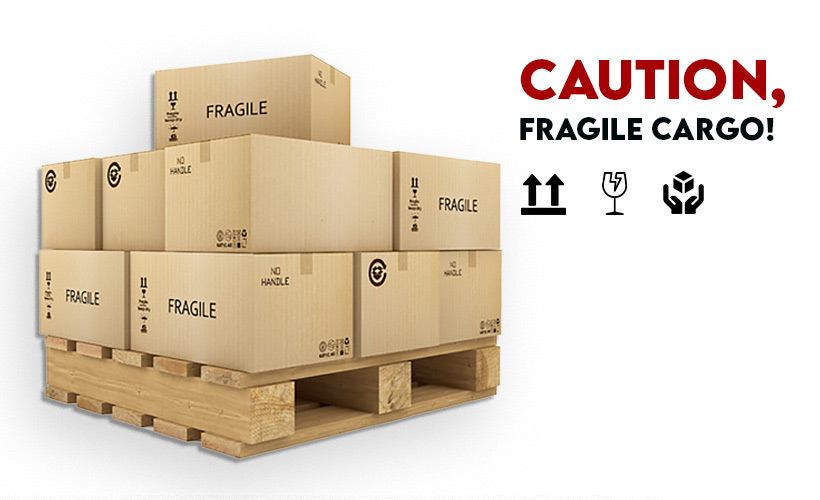6 Essential Tips for Safely Transporting Fragile Goods

Proper packaging of goods, especially for fragile goods, is critical to successful delivery. Fragile goods come in many forms and require special equipment, handling, and handling conditions. These include glassware, laboratory equipment, musical equipment, jewelry, household items, china, valuable collectibles, or liquid goods. We present to your attention 6 essential tips for safely transporting this category of goods.
1. Packaging is selected according to the characteristics of the cargo. Filling voids in the tare with soft material helps secure the cargo during transport. This method helps reduce the impact of bumps and shocks.
2. When packing and loading fragile goods, regardless of the type of transport, consistency should be strictly followed: placing heavier loads lower reduces the risk of crushing or damaging smaller, more fragile goods.
3. Choosing the optimal type of transport that ensures timely and reliable delivery depends on the characteristics of the cargo.
4. Packing of personal items. No matter how big or small the items are, if they are fragile, they must be packed properly and efficiently. The use of materials such as bubble wrap, fabric, or cardboard will protect the goods, the cargo in the box will additionally be strapped, taped, etc. it is recommended to provide with
5. Marking of the parcel. The presence of clear labels such as "handle with care" or "fragile goods" is a reminder that this group of goods requires special handling.
6. Loading and unloading operations are carried out manually or using special equipment only by experienced workers.
However, even with the most careful organization of transportation, unexpected circumstances can arise that cause damage or loss of cargo. It is in such cases that there is a category of cargo insurance, which is especially important during the transportation of fragile goods. Insurance sums guarantee the client compensation for the value of the property.















